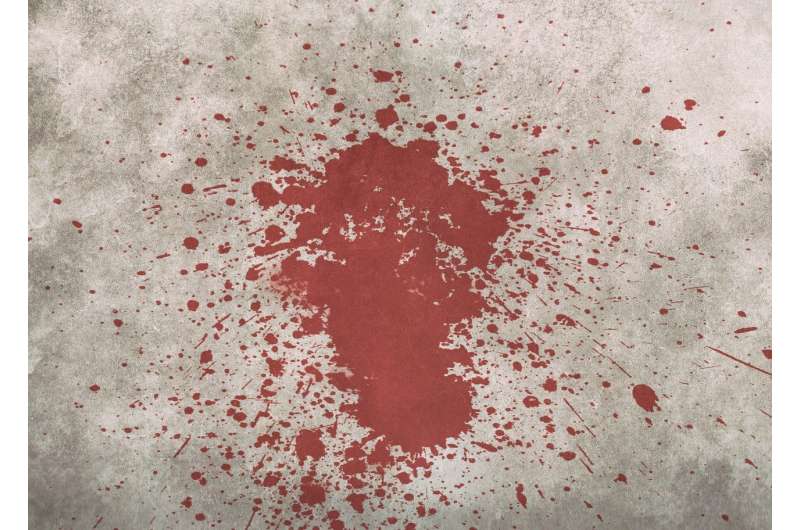Solving a murder case with physics

In 2009, famed music producer Phil Spector was found guilty of the murder of actress Lana Clarkson, who was found dead from a single gunshot to her mouth at close range in Spector's California mansion.
During the trial, the attorney argued that Spector couldn't have been the shooter because his white dinner jacket only had a handful blood droplets on it. If he shot Clarkson, the jacket would be covered with blood.
After watching a film about the trial, UIC Distinguished Professor Alexander Yarin was intrigued by the scientific questions it raised. Yarin and his colleagues from Iowa State University—Assistant Professor James Michael and Associate Professor Daniel Attinger— started researching blood spatter, and their recent papers show how Spector could be the shooter and remain relatively free of blood droplets.
The researchers discovered that the gases released from a gun's muzzle brakes escape in a series of turbulent vortex rings, which causes a phenomenon called "blood back spatter"—the blood that travels back toward the shooter—to reverse direction away from the shooter.
"At shortrange shooting, the muzzle gasses interfere with the blood back spatter and deflect droplets," Yarin said. "We did simulations with my Ph.D. student Gen Li and found that there are scenarios where droplets can be turned around completely and land behind the victim. Experiments of Dr. Michael confirmed that prediction."
In addition, the researchers noted that a shooter could stand in a certain position or at a specific angle and all backward blood spatter would be turned around, keeping the shooter clean.
"Essentially, I believe this proves that a shooter could have been guilty. There is an explanation for how his outfit could have been basically clean. And the explanation is essentially physically sound," Yarin said.
The researchers plan to continue investigating the blood spatter as they examine a variety of interesting situations and variables.
"We want to go much further," he said. "You have the effect of skin, which may not be that significant, but the effect of surrounding bones can be very significant," he said. A cranial wound, Yarin noted as an example, does not result in an immediate spatter; it is delayed.
"There's a lot of interest in the phenomena associated with these types of wounds," Yarin said. "We would like to study them and understand them better because there might be several waves of gushes of blood and brain matter from such wounds."
More information: Gen Li et al, Blood backspatter interaction with propellant gases, Â鶹ÒùÔºics of Fluids (2021).
Learn more about Yarin's research at .
Journal information: Â鶹ÒùÔºics of Fluids




















